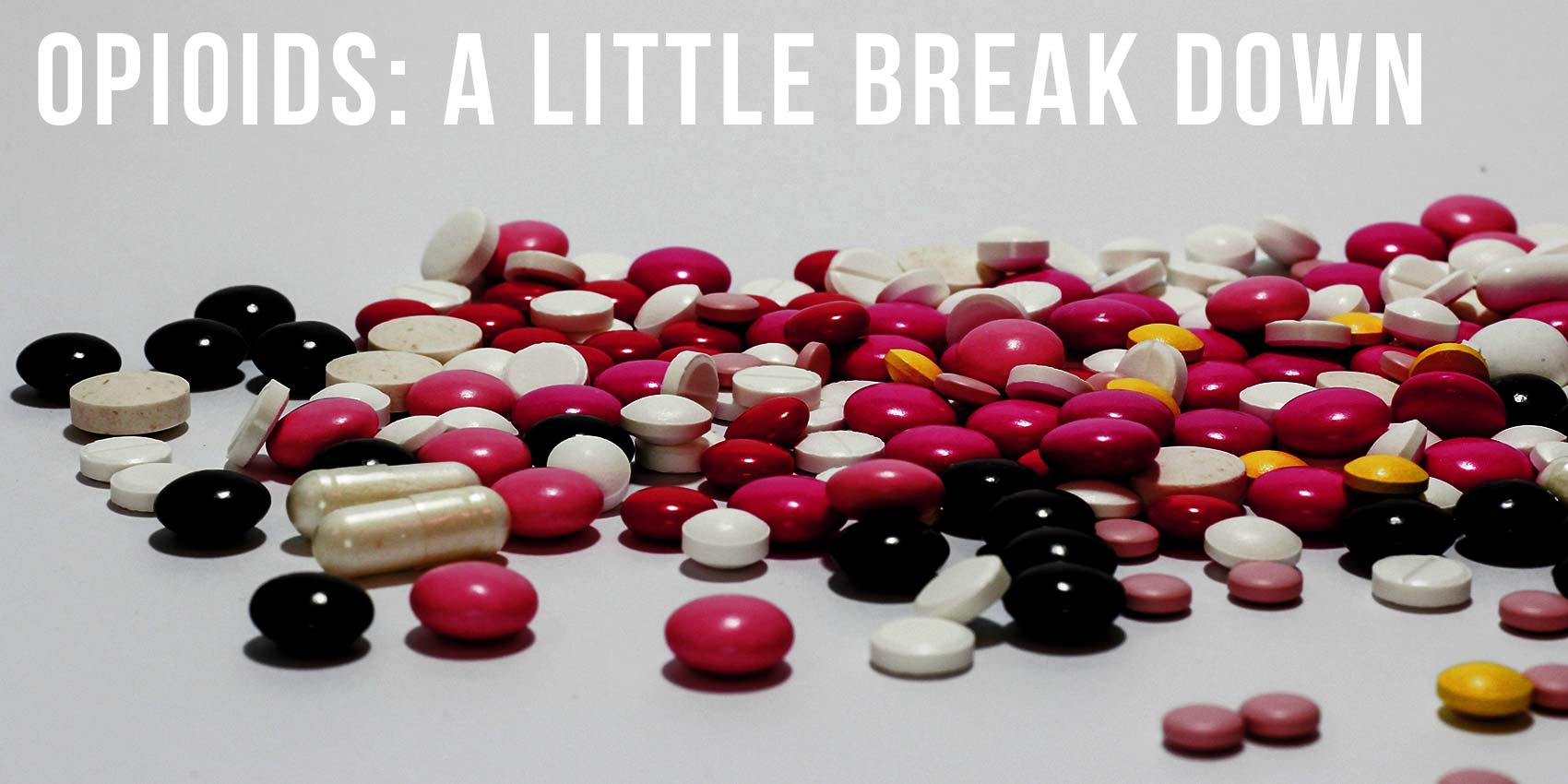30 Aug Opioids: A little breakdown


DID YOU KNOW? Roughly 80% of first-time Heroin users reported misusing an Opioid painkiller for non-medical purposes.
(SAMHSA CBHSQ Data Review, 2013).
Opioids are sometimes called opiates. But a distinction exists between the two:
– Opiates are drugs that are derived from the opium poppy plant.
– Opioids refer to the broader scope of substances, natural or man made (synthetic), that bind to the brain’s opioid receptors- just like opioids do— but these do not need to be made from opium.
What are opioid receptors? They are the parts of the brain responsible for controlling pain, reward and addictive behaviors. When something binds to them it produces a surge in “feel good” chemicals. Both opioids and opiates impact the opioid receptors but only opioids are from the opium plant.
We know. A bit confusing, which is why this post breaks down the information for you so you understand all the distinctions and differences concerning opioids.
First of all, opioids can be either legal or illegal.
Second, they are either man made or natural. When man made, they are called “synthetic.” Overall, there are three classifications based on how natural or synthetic the opioid is: Pure opium, partially synthetic, and completely synthetic.
No matter if they are synthetic (man made) or natural, illegal or legal, opioids depress the central nervous system. They are referred to as narcotics—the name given to drugs that relieve pain and dull the senses (according to the Drug Enforcement Agency). Narcotics are either legally prescribed to kill pain or illegally used to kill pain and/or get high.
Here is a list of opioids and a little breakdown now that you know the main differences (synthetic, partially synthetic or natural; legal or illegal).

Opium—one of the most commonly used drugs worldwide. This is an illegal street drug that comes straight from the poppy plant—see image at left from Google images (c0ming soon) (the milky fluid from inside is squeezed out and dried to become raw opium). Hence, it is natural. Do not confuse natural with ok; poison ivy is natural too, but we tend to avoid it!
Morphine—is a very powerful painkiller derived directly from the poppy plant so it is classified as a natural opiate. It can be prescribed legally.
Codeine—another prescription painkiller (legal) that is the second naturally occurring substance (besides morphine) derived from the poppy plant and used to reduce pain. According to the World Health Organization, it is the most widely used opiate in the world. Codeine is often used to suppress chronic coughs.
Heroin—is an illegal street drug that is either snorted, smoked or injected. The injection part makes it very dangerous as people tend to share needles and spread deadly diseases like HIV/AIDS. It is derived from morphine but it is classified as a semi-synthetic because a synthetic process is used to create the narcotic heroin. Heroin is often sold on the streets by drug dealers.
OxyContin—is a prescribed pain killer (for example, Vicoden). When prescribed it is legal. But it is time released in pill form so people can crush it and then take all the medicine at once. This would be an abuse of the medicine and can lead to an overdose. It is partially synthetic.

OVERDOSE: An overdose is a lethal or toxic amount of a substance. An overdose does not necessarily mean that a person dies; it means the body could not safely metabolize the substance, resulting in severe illness, organ failure OR death.
Hydrocodone—another prescription painkiller (legal) derived from the poppy plant but partially synthetic.
Methadone, Buprenorphine and Suboxone—these are used to help treat individuals with opioid addiction. Read more about them in the sub-post Warning Signs and Treatment.
Fentanyl—is totally synthetic (so an opioid, not opiate) similar to morphine but 50 to 100 times more potent (meaning powerful). It is prescribed for pain reduction. It can be swallowed, smoked or injected. Nearly half of opioid-related deaths in 2016 involved fentanyl.
Wait? Did we title this sub-post “A little breakdown?” What was up with that? Because that was a big breakdown! But now you are are in the know with all the different terms, classifications and common drug names. And the more you are in the know, the less likely you will be to slide down the slippery slope….

DID YOU KNOW? Morphine is named after Morpheus, the Greek God of dreams.




Post Question:
How many terms had you heard prior to reading this? Ask your parent if they knew those terms growing up. What was their response and how does it make you feel?
Answer the post question here
What's being said